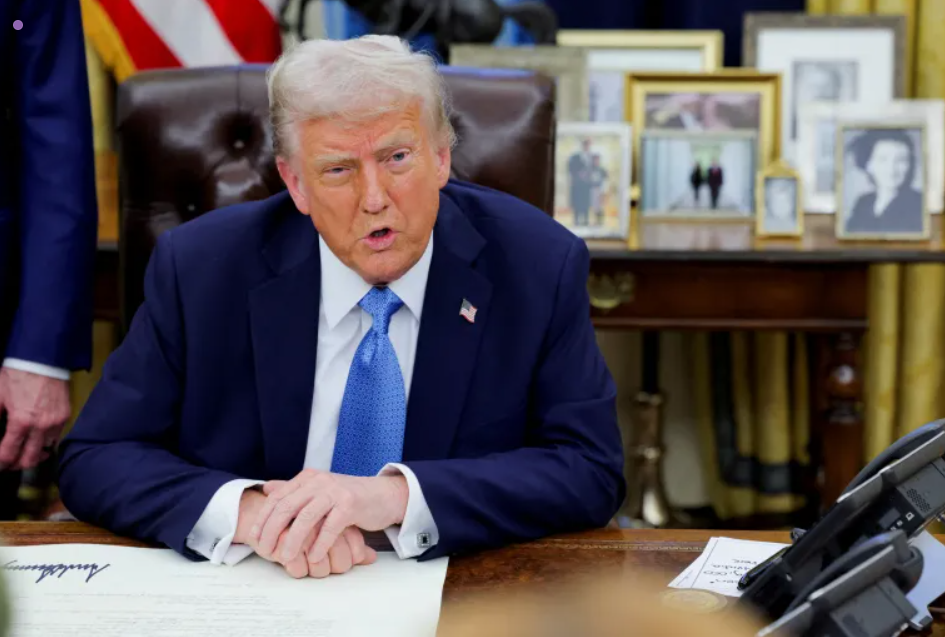(Al Jazeera Media Network) United States President Donald Trump announced that he would “immediately pause” tariffs on Mexico and Canada for 30 days after speaking with their leaders on Monday.
However, a 10% tariff on all China exports comes into effect on Tuesday.
So what led to this decision, and why was the pause announced?
What happened between the US, Canada, Mexico and China?
On February 1, Trump signed executive orders imposing 25% tariffs on Mexico and Canada, with a partial exemption for Canadian energy and oil exports, and a 10% tariff on China.
Trump has also spoken against the high trade deficit in goods with the three countries that together stands at more than $480 billion. China, Mexico, and Canada collectively made up more than 40% of US imports of goods last year at $1.2 trillion.
He said these tariffs would remain in place until the countries took steps to curb the flow of migrants and drugs, particularly fentanyl, into the US. The tariffs risked increasing the cost of online goods and prompted global market uncertainty over the risk of a sharp slowdown in global growth.
However, on Monday, the leaders of Mexico and Canada struck last-minute deals, pausing the impending tariffs.
Mexico’s President Claudia Sheinbaum announced the deployment of 10,000 National Guard officers to the border to curb drug trafficking and migrants into the US after speaking with Trump.
Canadian Prime Minister Justin Trudeau had two calls with Trump after which he announced a 30-day pause in the US tariffs. In return, Canada has agreed to send forces to the border to fight drug trafficking and undocumented migration as demanded by the new US administration.
Meanwhile, the 10% tariff Trump imposed on China took effect at 12:01am EST (05:01 GMT) on Tuesday.
China imposed retaliatory tariffs on a range of US goods and products, including a 15% levy on imports of coal and liquefied natural gas (LNG). Beijing also slapped 10% tariffs on crude oil imports and farm equipment.
Amid the tariff war, Trump said he intends to speak with Chinese President Xi Jinping in the coming days.
Why did Trump decide to pause the tariffs?
According to experts, the primary objective of the tariffs was “to strategically meet the goals of Trump’s foreign policy and domestic policy, and that was to stop the flow of the illegal drug fentanyl into the United States,” Al Jazeera’s Kymberly Halkett reported from the White House.
“You have to remember fentanyl is responsible for approximately 70,000 overdose deaths in the US each year. While much attention has been focused on Mexico and the southern border, US officials have also identified Canada and the northern border as key entry points for the drug,” Halkett added.
According to a report by The New York Times, in 2024, US Customs and Border Protection agents seized approximately 19 kilograms of fentanyl at the northern border, a stark contrast to the nearly 9,600 kg intercepted at the US-Mexico border, where cartels mass-produce the drug.
Canada’s McGill University professor of economics Julian Karaguesian suggests that this dispute may not be over.
“It’s possible that President Trump was just trying to not only make a show but actually fulfil a campaign promise and create a flurry of activity to show his base and to show the wider American public that he is not only fulfilling his campaign promises but he is doing it with extreme prejudice,” Karaguesian said.
What’s next for China?
Trump has repeatedly criticised China for allowing fentanyl to flood into the US, accusing Beijing of not doing enough to curb the supply of both counterfeit and real fentanyl.
China has called the fentanyl crisis “America’s problem”.
“China is one of the world’s toughest countries on counter-narcotics both in terms of policy and its implementation. Fentanyl is an issue for the US. In the spirit of humanity and goodwill, China has given support to the US’s response to this issue,” a Chinese Ministry of Foreign Affairs spokesperson said in a release on Tuesday.
“It’s important to remember that the PRC [People’s Republic of China] was already facing tariffs imposed by the Trump administration during his first term, and the Biden administration never removed them. These new tariffs come on top of those existing measures,” Ja Ian Chong, from the National University of Singapore, told Al Jazeera.
“So far, China has responded relatively calmly, suggesting that a 10% tariff is something they can withstand. While the PRC economy has slowed, they have been working to diversify into other markets and boost domestic consumption. We will have to see how that strategy unfolds,” he added.
During his first term in 2018, Trump launched a fierce two-year trade war with China, imposing tit-for-tat tariffs on about $50 billion worth of Chinese imports.
“We have a tremendous intellectual property theft problem,” Trump said in 2018. “It’s going to make us a much stronger, much richer nation.”
To end that trade war, China agreed in 2020 to increase its annual purchases of US goods by $200 billion, but the plan was disrupted by the COVID-19 pandemic, and Washington’s annual trade deficit with China remained above $300 billion, according to Chinese customs data released last month.
China, the world’s second-largest economy, says the “unilateral tariff hike” by the US “seriously violates World Trade Organization rules.” It also launched an anti-monopoly investigation into Google and imposed controls on rare earth exports crucial for the manufacture of semiconductors.


